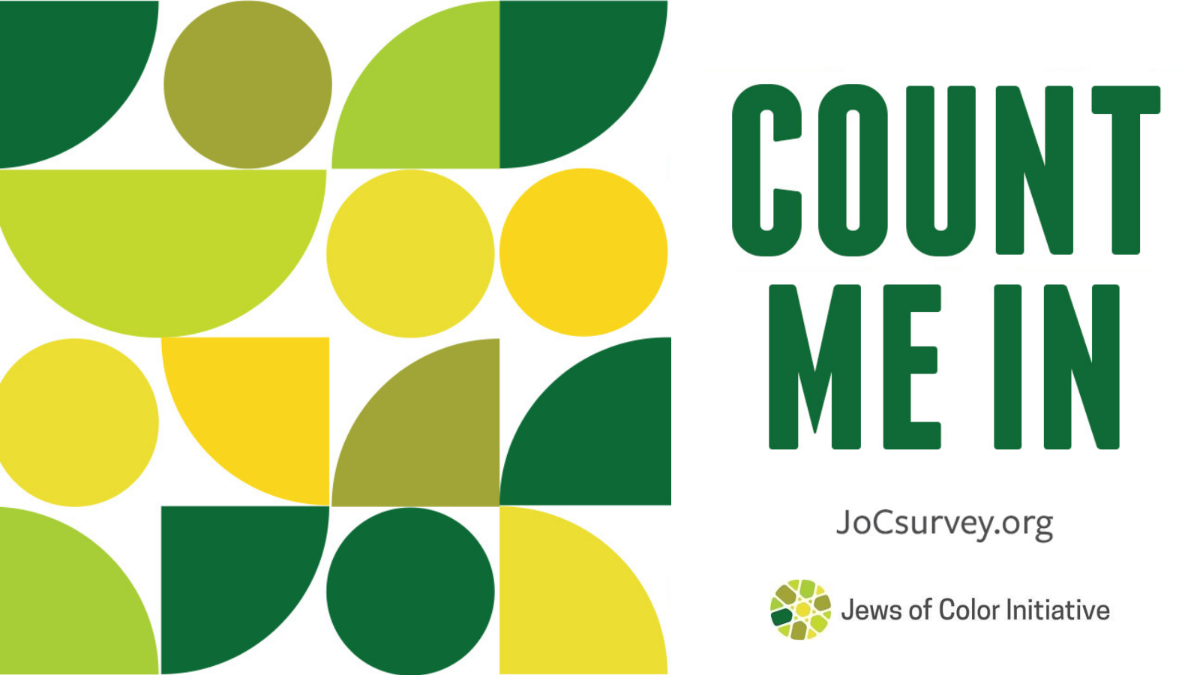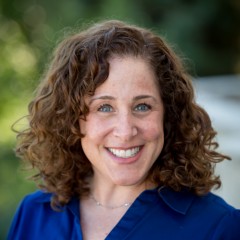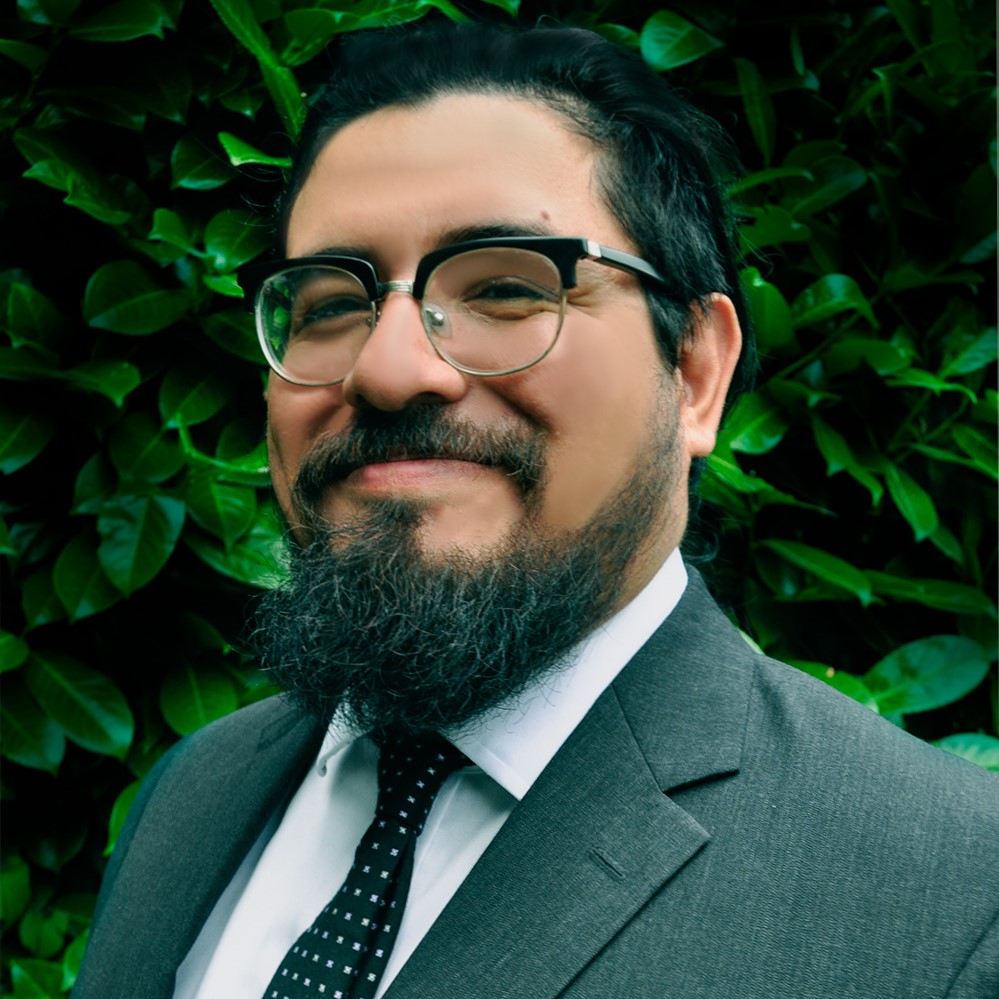
When the Jews of Color Initiative decided to expand on our learnings from our first demographic study, we knew our second study required two essential components: thoughtful questions that dig deeper into the experiences of Jews of Color, and a stellar research team.
Working in partnership with lead-researcher Dr. Tobin Belzer, we assembled a research team, housed at Stanford University, that spans a wide range of academic backgrounds, research and methods specialties, and lived experiences and identities. Together, they conducted background research, initial qualitative interviews to inform their questions, and developed the Count Me In survey.
Representing diverse ethnic and racial backgrounds, the research team is intentionally multiracial and multiethnic.
 At the head of the research team is Tobin Belzer, Ph.D., an applied sociologist—a researcher that works with non-profits and philanthropists to make on-the-ground change—who focuses on Jewish identity, organizational culture, and other topics. She is affiliated with the University of Southern California, and Stanford University.
At the head of the research team is Tobin Belzer, Ph.D., an applied sociologist—a researcher that works with non-profits and philanthropists to make on-the-ground change—who focuses on Jewish identity, organizational culture, and other topics. She is affiliated with the University of Southern California, and Stanford University.
Dr. Belzer brings an expertise in qualitative feminist research methods. This approach turns traditional research on its head, arguing that researchers always operate from their particular social positions and perspectives.
“Rather than pretending I don’t have any connection to, or don’t really care about, what I’m studying, or even that my perspective wouldn’t influence my research at all, instead I claim my stance.” This included reflecting on the limits of her own understanding as a white Jew, and guiding her to build a multiracial research team. “It’s an honor to work with this extraordinary team to contribute to a fuller understanding of American Jewish life by centering the experiences of Jews of Color.”
Dalya Perez, Ph.D. is a diversity, equity, and inclusion strategist working at Microsoft’s Mixed Reality, an educator, and researcher specializing in critical race theory. Dr. Perez uses her own lived experiences of simultaneous identities in all aspects of her work, and working on the Count Me In study has allowed her the chance to merge the personal with the professional.
“When Tobin reached out to me last year to share this project with me and invite me to participate, I couldn’t say no,” Dr. Perez shared. “As a daughter of an Egyptian Sephardic Jewish refugee mother and a Filipino immigrant father, my life and identity has been deeply informed by the experience of navigating between my multiracial and Jewish identities.”
For Dr. Perez, the Count Me In study is an opportunity to create visibility and connectedness for Jews of Color who otherwise can feel isolated as people of color in Jewish spaces and as Jews among other people of color. “As a Jew of Color it’s rare to see myself reflected either in Jewish spaces or in BIPOC spaces. This intersection of identity is usually a lonely experience and is not given much visibility.”
“Most Jews of Color that I know don’t have other Jewish connections in their BIPOC community spaces. This research is long time coming and will reveal important trends and themes that will ideally be used to fund and sustain more racially diverse and equitable spaces in Jewish organizations and bring attention to the unique challenges and experiences that we face as Jews of Color.”
 Ari Y. Kelman, Ph.D. is a member of the research team that bridges our previous study with Count Me In. The lead researcher for our first major study, Counting Inconsistencies, Dr. Kelman is a professor of Education and Jewish Studies, and of Religious Studies at Stanford University. Dr. Kelman is particularly pleased with the collaborative process among the research team.
Ari Y. Kelman, Ph.D. is a member of the research team that bridges our previous study with Count Me In. The lead researcher for our first major study, Counting Inconsistencies, Dr. Kelman is a professor of Education and Jewish Studies, and of Religious Studies at Stanford University. Dr. Kelman is particularly pleased with the collaborative process among the research team.
“Tobin is leading the team, but in a way that is very equitable and balanced,” Dr. Kelman said. “It’s not ‘Tobin’s team.’ It really feels like we’re working together and everybody’s drawing on their own strengths. The team is astonishingly good.”
Dr. Kelman is excited to be part of a major study that values the lived experiences of Jews of Color. “This is the first time that anybody has undertaken a major study of Jews of Color in the United States, and the first time in a national study that scholars of Jewish identity have taken race and ethnicity seriously.”
Dr. Kelman is also a white Jewish researcher and knows that a multiracial research team had to be at the center of this study. “It was critical that the research team and the advisory council included many people that represent and embody the community we’re studying. We couldn’t have done it if it were just a bunch of white folks like me.”
Tory Brundage is in the final stages of his Ph.D. at the University of Washington focusing on identity development, intersectionality, and other topics. Brundage says that his experience as a mixed-race individual raised by a white family in California and numerous states in the Midwest have influenced his scholarship and work, including with the Count Me In research team.
“I’m a Black man who was raised in lots of rural parts of the country, so I have a very hyper-racialized lived experienced,” Brundage shared, adding that this experience guides him to “keep centering race” and critical race theory in the Count Me In study.
“In addition, I don’t identify as Jewish, so there’s a newness that I can bring to looking at things,” Brundage said humbly. He said that his position as a non-Jewish person of color on the research team encourages the other researchers to “deliberately lay out” their underlying knowledge and assumptions about how to define concepts of Jewish identity.
As a graduate student, Brundage has found inspiration and catharsis working on this research team. “Being around people with values that really align with mine and feeling more valuable and hopeful in a really dark time…we all have pretty complicated lived experiences…it’s been a really cathartic and therapeutic process…seeing this really nuanced, contextualized research happening with such diligence…has been a really good motivator for me as a doctoral student.”
Brundage is excited to be part of this research team because he can play a role in “shining a spotlight” on those “wonderful humans who have so much to share” but have been pushed to the margins. “It’s been pretty cool to be part of something that really fills my cup,” he added.
 Gabriella “Gage” Silva Gorsky, Ph.D. is a research consultant focused on marginalized identity and social categorization. One example of the innovative ways Dr. Gorsky has applied this research focus was in their dissertation on gender stereotypes in middle-school math problems. Dr. Gorsky identifies as a non-binary queer Mexican Jew, and sees these identities as influential to their research.
Gabriella “Gage” Silva Gorsky, Ph.D. is a research consultant focused on marginalized identity and social categorization. One example of the innovative ways Dr. Gorsky has applied this research focus was in their dissertation on gender stereotypes in middle-school math problems. Dr. Gorsky identifies as a non-binary queer Mexican Jew, and sees these identities as influential to their research.
Dr. Gorsky has brought both the personal lived experience of being a Jew of Color and an expertise in statistics to the Count Me In study. Dr. Gorsky held in-depth conversations with the other members of the research team as they established the shared understanding of JoC identity that would guide their research.
Some questions included “What does it look like to be a Jew of Color in the United States right now? What are the challenges? What are the joys? How do your experiences inform your sense of self as part of this category of ‘Jews of Color,’ and what is that category? What does it mean to people?”
Part of studying identity is allowing space for the multiplicity of experiences. “I hope the take-away from our study is that there are infinite ways of holding this identity,” Dr. Gorsky shared, adding that they want the Count Me In study to “expand understandings of Jewish identity, of intersectional identities, and intersecting oppressions.”
Vincent Calvetti is a Ph.D. student studying identity development in the Interdisciplinary Near and Middle Eastern Studies Program at the University of Washington. His previous research looked at the Israeli Black Panthers and how they drew on the activism of the Black Power movement of the United States.
One of Vincent’s main roles in the research team has been to conduct interviews with participants to help inform the questions that would be used on the survey. Through the process of conducting and analyzing the interviews, Vincent strengthened his awareness that the experience of being a Jew of Color varies across racial and ethnic identities.
“The experience of a Black Jew has unique elements that are not experienced in the same way among Chicano Jews or Asian-American Jews, for example.”
Despite these differences, Vincent emphasized that there are commonalities of how Jews of Color experience identity in the context of the U.S. that makes it important to study Jews of Color as a collective identity category. “The category of Jews of Color is oriented around how folks that face particular kinds of discrimination or prejudice in Jewish spaces can work together in order to push for change within their communities,” Vincent explained.
Together, the research team is not only building a remarkable study of Jews of Color, but they are modeling the future of research excellence. Built on interdisciplinary collaboration guided by both feminist and critical race lenses, their work is fueled by the impact it will have on the community.
If you self-identify as a Jew of Color, take the 15-minute Count Me In survey today at JoCsurvey.org.



